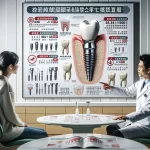Root canal reinfection can be a frustrating setback after what you thought was a successful treatment. Did you know that up to 15% of root canal procedures may fail within 5 years? If you’re experiencing discomfort or worried about a potential reinfection, you’re not alone.
Don’t worry – we’ve got you covered. This ultimate guide to root canal reinfection symptoms and solutions will arm you with the knowledge to spot warning signs early and take action fast. You’ll learn about:
- Common symptoms that signal trouble
- Underlying causes of reinfection
- Cutting-edge treatment options for 2025
- Expert tips to prevent future issues
As a dental professional with over a decade of experience, I’ve helped countless patients navigate this challenge. Ready to become your own dental detective and safeguard your smile? Let’s uncover the secrets to beating root canal reinfection together.
Understanding Root Canal Reinfection
Root canal reinfection occurs when bacteria re-enter the treated tooth, causing a new infection. This can happen weeks, months, or even years after the initial root canal procedure. While root canal treatments have a high success rate, reinfection is possible due to various factors.
Common Symptoms of Root Canal Reinfection
Recognizing the signs of root canal reinfection is crucial for early intervention. Here are the most common symptoms to watch for:
- Persistent or recurring pain: Discomfort that lingers or returns after initial healing
- Swelling: Inflammation in the gum tissue surrounding the treated tooth
- Sensitivity to pressure: Pain when biting down or applying pressure to the tooth
- Discoloration: Darkening of the tooth compared to surrounding teeth
- Pimple-like bump on the gum: Also known as a sinus tract or fistula
- Fever: In some cases, a low-grade fever may accompany the infection
- Bad taste or odor: Persistent unpleasant taste or breath associated with the treated tooth
If you experience any of these symptoms after a root canal, it’s essential to contact your dentist promptly for evaluation.
Causes of Root Canal Reinfection
Understanding the potential causes of reinfection can help prevent future occurrences. Here are the primary factors that may lead to root canal reinfection:
1. Incomplete Cleaning of Root Canals
During the initial root canal procedure, it’s crucial to thoroughly clean and shape all canals within the tooth. However, some teeth have complex anatomy with additional canals that may be missed during treatment. These untreated areas can harbor bacteria, leading to reinfection.
2. Inadequate Seal or Restoration
After root canal treatment, the tooth must be properly sealed to prevent bacteria from re-entering. If the temporary or permanent restoration (filling or crown) is not placed correctly or becomes damaged, it can allow bacteria to penetrate the tooth.
3. Delayed Permanent Restoration
Postponing the placement of a permanent crown or filling after root canal therapy can increase the risk of reinfection. Temporary fillings are not designed for long-term use and may deteriorate over time.
4. Crack or Fracture in the Tooth
A crack or fracture in the treated tooth can provide a pathway for bacteria to enter, potentially causing reinfection. These cracks may develop due to trauma, grinding, or biting on hard objects.
5. New Decay
If new decay develops around the margins of the restoration or in other areas of the treated tooth, it can compromise the seal and allow bacteria to re-enter the root canal system.
6. Persistent Infection
In some cases, the initial infection may not have been completely eliminated during the first root canal treatment, allowing bacteria to persist and cause ongoing issues.
What to Do Next: Treatment Options for Root Canal Reinfection
If you suspect a root canal reinfection, it’s crucial to seek professional dental care promptly. Your dentist will evaluate the tooth and recommend appropriate treatment options. Here are the most common approaches:
1. Retreatment (Endodontic Retreatment)
In many cases, the first line of treatment for a reinfected root canal is retreatment. This involves:
- Removing the existing root canal filling material
- Thoroughly cleaning and disinfecting the canal system
- Addressing any missed canals or anatomical complexities
- Placing new filling material and sealing the tooth
Retreatment can often successfully resolve the infection and save the tooth.
2. Apicoectomy (Root-End Surgery)
If retreatment is not possible or unsuccessful, an apicoectomy may be recommended. This surgical procedure involves:
- Making a small incision in the gum tissue near the tooth
- Removing the infected tissue at the root tip
- Sealing the end of the root canal
- Placing sutures to promote healing
Apicoectomy can effectively treat persistent infections that don’t respond to conventional retreatment.
3. Extraction and Replacement
In some cases, if the tooth cannot be saved or the infection is severe, extraction may be necessary. After extraction, options for tooth replacement include:
- Dental implant
- Bridge
- Partial denture
Your dentist will discuss the best replacement option based on your individual needs and oral health status.
Preventing Root Canal Reinfection
While not all cases of reinfection can be prevented, there are steps you can take to minimize the risk:
- Follow post-treatment care instructions: Adhere to your dentist’s guidelines for oral hygiene and temporary restoration care.
- Complete the restoration process: Ensure you receive the permanent crown or filling as recommended by your dentist.
- Maintain good oral hygiene: Brush twice daily, floss regularly, and use an antiseptic mouthwash to keep bacteria at bay.
- Attend regular dental check-ups: Allow your dentist to monitor the treated tooth and catch any potential issues early.
- Avoid biting on hard objects: Protect your treated tooth from potential cracks or fractures.
- Address teeth grinding: If you grind your teeth, consider using a night guard to prevent excessive pressure on the treated tooth.
When to Seek Emergency Dental Care
While most cases of suspected root canal reinfection can be addressed during regular office hours, some situations warrant immediate attention. Seek emergency dental care if you experience:
- Severe, uncontrolled pain
- Significant swelling that affects breathing or swallowing
- High fever accompanied by dental symptoms
These symptoms may indicate a spreading infection that requires urgent intervention.
The Importance of Timely Treatment
Addressing root canal reinfection promptly is crucial for several reasons:
- Preventing spread of infection: Untreated infections can spread to surrounding tissues and potentially lead to systemic health issues.
- Preserving the tooth: Early intervention increases the chances of saving the affected tooth.
- Minimizing discomfort: Timely treatment can alleviate pain and other uncomfortable symptoms.
- Reducing treatment complexity: Addressing the issue early may allow for less invasive treatment options.
Conclusion: Navigating Root Canal Reinfection with Confidence
Root canal reinfection, while concerning, is a manageable dental condition when addressed promptly and appropriately. By understanding the symptoms, causes, and treatment options, you can take proactive steps to protect your oral health. Remember, regular dental check-ups and good oral hygiene practices are your best defense against reinfection and other dental issues.
If you suspect a root canal reinfection or have concerns about a previously treated tooth, don’t hesitate to contact your dental professional. With modern endodontic techniques and technologies, many reinfected teeth can be successfully treated, allowing you to maintain your natural smile for years to come.
Yes, a root canal can become reinfected, although it’s relatively rare. Reinfections can occur due to several reasons, including incomplete cleaning of the canals, new decay, or a crack in the tooth.
Signs of a reinfected root canal include persistent pain or sensitivity, swelling or tenderness in the gums, a visible crack or damage to the tooth, and discharge or a bad taste in the mouth.
Treatment options include root canal retreatment, apicoectomy, or, in more severe cases, tooth extraction and replacement with a dental implant. The choice of treatment depends on the severity and specific circumstances of the infection.
Preventing reinfections involves maintaining good oral hygiene, regular dental check-ups, and avoiding habits that could damage teeth, such as grinding or chewing hard objects.
Yes, alternatives include dental implants or an apicoectomy. These options are considered when the tooth cannot support a retreatment or if the retreatment fails to resolve the issue.







